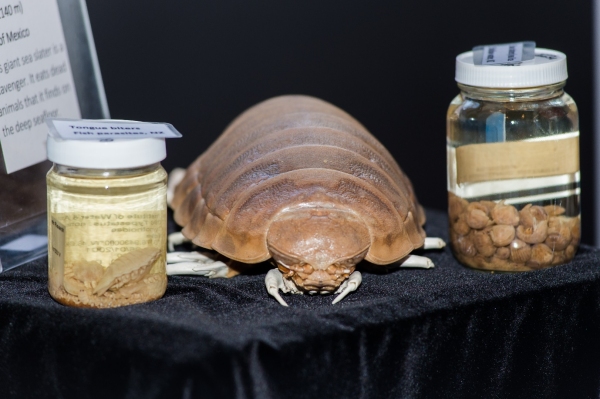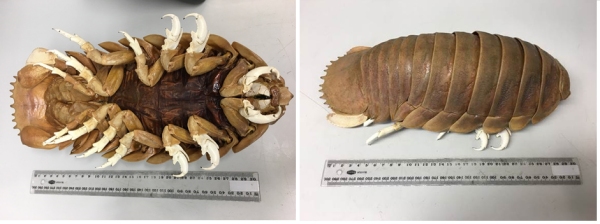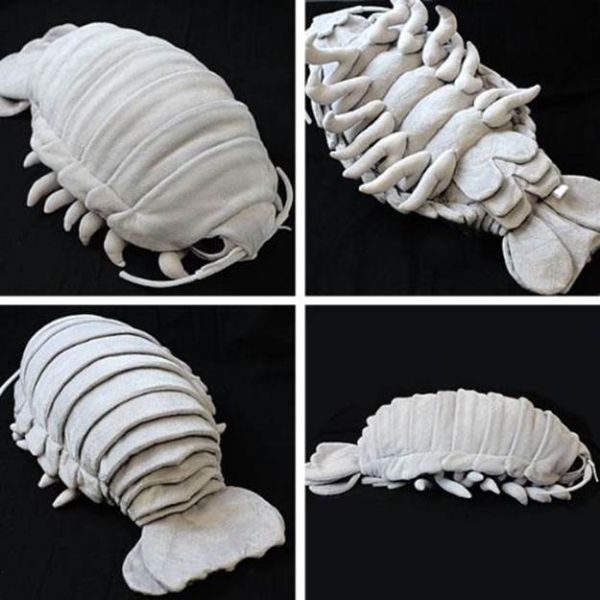Isopods are the small common terrestrial slaters, which are found lurking under stones or in leaf litter, and the small marine parasitic isopods, known to fisherman as sea-lice, tongue-biters or fish doctors. The giant sea slater Bathynomus giganteus A. Milne Edwards, 1879 is an abundant isopod species of massive size from the family Cirolanidae.
Cirolanid isopods occur in all oceans and marine habitats, from the intertidal to about 3000 m depth, and some may be surprised to learn that they are known to be the most voracious predators and scavengers in the ocean! Cirolanids are bottom dwellers that eat dead matter that falls to the sea floor, and by doing so they are helping the ecosystem to function properly by removing waste, and are therefore important in maintaining ecosystem health.
Some members of the Cirolanidae family are among the largest crustaceans, and B. giganteus like its name suggests, is gigantic compared to the usual slaters we have in New Zealand. It is a Caribbean species that is not yet known from our waters that can grow up to 45 cm in length! The specimen on display at the Storylines Festival was collected from the depths of a trench near the Gulf of Mexico.
Have you ever wondered what happens to dead whales and fish?
Well, once they sink to the sea floor they are eaten by scavengers such as Bathynomus giganteus. This video shows a dead tuna being demolished by several giant sea slaters, and illustrates perfectly how efficient they are at devouring dead carcasses!
Their tendency to gorge themselves on dead flesh has not gone unnoticed to humans - some museums have used giant sea slaters to help them prepare whale carcasses for display, and to clean shark carcasses for the retrieval of cartilage for industry. Fisherman that have caught them inadvertently (because they attack trawl nets) have noted that some individuals gorge themselves to a point where their ability to move is compromised because their bellies are so big that their legs can no longer touch the ground!
However, they can be a nuisance and potentially harmful to humans as well. Bathynomus can, and do, attack trawl and trap catches, destroying or spoiling the catch by chewing through the fish and making them unfit for sale. Other cirolanids feed on commercial mussel beds and, in one instance, almost caused a collapse in a shark fishery by swarming and attacking sharks and eating their vital organs. Some small cirolanid species are known to bite humans on tropical surf beaches.
Just to show you that sometimes these critters can be cuddly here’s a picture of a 55 cm stuffed toy version available to buy through Amazon!
References and further reading:
- This article has some more fascinating facts about giant isopods.
- Schotte, M. (2015). Bathynomus giganteus A. Milne Edwards, 1879. In: Boyko, C.B; Bruce, N.L.; Merrin, K. L.; Ota, Y.; Poore, G.C.B.; Taiti, S.; Schotte, M. & Wilson, G.D.F. (Eds) (2008 onwards) World Marine, Freshwater and Terrestrial Isopod Crustaceans database. Accessed through: World Register of Marine Species.



